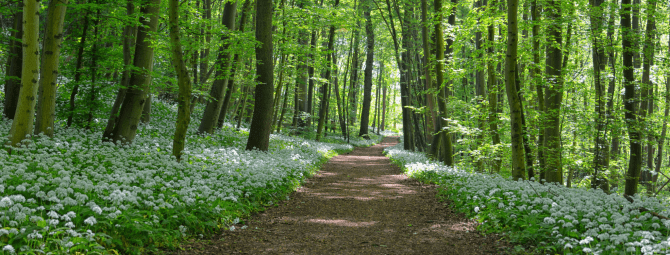
Did you know that having a bath in a forest can be good for your mind, body and soul? It’s true! - except that this type of bathing has nothing to do with water! The tradition of forest bathing, forest therapy or shinrin-yoku, is believed to reduce stress and promote wellbeing.
Developed in Japan in the 1980’s , Japanese scientists found that people who spent time walking in Japan’s many forests experienced reduced stress, reduced blood pressure, improved concentration and memory. In addition, chemicasl released by trees and plants, called phytoncides, was found to boost the immune system. With the benefits that accompanied something as simple as taking a walk in nature, the Japanese government incorporated it into the country’s health program and forest bathing now plays a part in the country's preventive health care strategy.
The practice of Japanese forest bathing and the benefits that accompanied it, caught on all over the world and in 2018, the City of Markham completed construction of four Shinrin-yoku trails in local parks. Today , Pomona Mills Park, Rouge Valley Trail, Springdale Park and Valley and Toogood Pond Park have been designated as Forest Bathing Trails and are open for all to experience.
How though does one actually achieve all the benefits that Forest Bathing is said to offer?
Turn off your Devices
Minimize distractions and let yourself fully immerse in the forest environment. Turn off any electronic devices and put them away.
Engage Your Senses
Listen to the sounds of the forest. Take in the scenery surrounding you. Take slow deep breaths and smell the forest air. Touch the tree and feel the leaves and branches.
Walk Slowly and Stop Often
Forest bathing takes place at a slow, almost meditative pace. Take your time, look around and engage your senses. Stop every so often and sit or look up and all around. Be still.
If you’re interested in reading more about Forest Bathing, check out this book list.


Add a comment to: What is Forest Bathing?